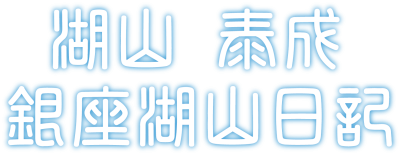Secondary disaster in the Great East Japan Earthquake

The Great East Japan Earthquake occurred on Friday, March 11, 2011.
In fact, in Kesennuma, a health care facility for the elderly along the coast was flooded up to the second floor, and all elderly people who had fallen ill were evacuated to the roof.
However, the next morning it snowed, and several people lost their lives.
Some residents of nursing care facilities cannot survive without the environment and care they receive inside the facility.
That’s why we have facilities.
That’s why they are in the facility.
That’s why our staff provides 24-hour care.
Unlike emergency lifesaving, nursing care involves long-term monitoring.
Nursing care is the bond of life for the weak.
Some people are just like babies.
Two days later, on Sunday, I was standing at the entrance to Koyama G’s senior citizen home in Kesennuma.
A large number of residents came out of the lobby, which was dark due to the power outage, to greet them.
I remember that many women came in Japanese clothes.
Fortunately, the old man of Koyama G in Kesennuma was on top of a mountain.
He heard that it used to be the site of an elementary school, and before that, there was a shrine.
The site where the shrine was located serves as an evacuation site in the event of a disaster.
Shrines are built in such safe places.
The old man was safe.
At that time of the earthquake.
However, there is no electricity, water, or telephone service.
The elevator doesn’t work either.
Anyway, the toilet doesn’t flush.
Many rice cookers and electric kettles were connected to the emergency power source.
There were 50 residents, staff, and elderly people who had evacuated from the area with just rice balls and instant miso soup.
Daycare users are also unable to return home.
Even though the staff members are worried about their families at home, they are unable to return home or receive phone calls.
Still, they were responsible for protecting the facility.
I was worried about the safety of the staff members who I couldn’t contact because they were on vacation, but it wasn’t until two weeks later that I was able to confirm that everyone was safe.
I remember thinking that it would be great if all cell phones had satellite communications sooner.
Later, the facility was equipped with a satellite phone.
Futons were spread out all over the day service and lobby.
The first thing I did when I arrived was to spread cardboard under the futon on the floor.
It was so cold that everyone was freezing.
For water, I drove to a nearby spring.
The excrement was dumped in buckets on the cliff in front of the facility.
The following year, the cliff was covered with flowers and grass.
it’s true
Due to the earthquake, communication networks across the country were cut off.
I can’t get through the phone or email.
All I could rely on was the bond of my heart.
Under such circumstances, why was I able to go to Kesennuma?
With special permission from the government and with the help of volunteer disaster relief helicopters, I flew to the Kesennuma facility with relief supplies.
With three helicopters.
This was the first civilian flight permission granted after the earthquake.
It was Sunday, March 13th.
In fact, he took off in silence, keeping it a secret from both the staff and his parents.
I thought they would object if I told them, so I planned to take a day trip by helicopter.
That was if I could buy gasoline for the return trip at Yamagata Airport.
In reality, I was unable to return home from the Kesennuma facility because the private helicopter could not sell me gasoline for the return trip.
It’s the same as if you foolishly went to rescue someone and ended up in a second accident because you couldn’t return home.
And to make matters even more foolish, he had secretly left both the staff and his family.
This disqualifies the rescue team.
I couldn’t contact anyone in Tokyo and was at a loss.
However, even though they were unable to contact Kesennuma, wagons continued to arrive from Koyama G Hospital in Yamagata.
I put aside my own actions and was surprised.
had a deep emotion.
Then, I was given a ride to Fukushima in that car.
I myself was saved by the Koyama G rescue team.
From Fukushima, I was picked up by an ambulance that had come from a hospital in Shizuoka to assist me, and was taken to Tokyo, where I was able to return.
Ambulances had been given special permission to run on expressways in anticipation of the Great Tokai Earthquake.
The highway on the way home was deserted.
It was difficult to get gasoline for the ambulance on the way home, as it was a private vehicle.
I can’t talk about the details of that process because it would cause trouble to the stand that sold it to me.
The trip takes 2 hours and 30 minutes by helicopter.
The return trip took 24 hours on the ground.
Photos of the nuclear power plant taken from a helicopter overhead were broadcast on an NHK special program.
In the event of a disaster, even if you survive, you will not be able to continue living unless you provide long-term support to the survivors.
In the aftermath of the Noto Peninsula Earthquake, there are many affected people in the area freezing in the cold, both in homes where electricity, gas, and water supply have been cut off, and in evacuation centers.
Relief efforts will continue for a long time.
Everything has just begun.
Pulse oximeter 96/98/98
Body temperature 36.5 Blood sugar 161
Prayer for the Aged
CEO Yasunari Koyama
